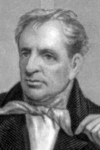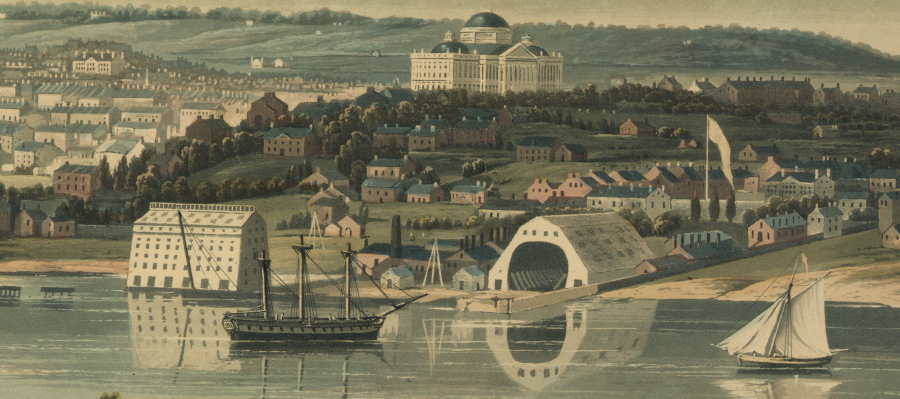 Two weeks ago, I looked into the Jonathan Elliott guide to Washington, published in 1830. Today, I want to look at its description of a place near to my heart: The Washington Navy Yard.
Two weeks ago, I looked into the Jonathan Elliott guide to Washington, published in 1830. Today, I want to look at its description of a place near to my heart: The Washington Navy Yard.
Elliott’s guide spends about 7 pages describing the Navy Yard, beginning with the usual explanations of its history, its size, the brick wall surrounding it, and its principal buildings. There follows a brief description of those ships that were used during the War of 1812 and then repaired at the yard. Much more intriguing is its description of the steam engine that had been installed after Latrobe’s engine had been destroyed during the burning of the Navy Yard. This new 14-horsepower engine drove a number of shafts:
By the power derived from the operation of the above shafts, a requisite power and motion is conveyed to two saw gates, each capable of receiving and working any number of saws sufficient for converting a log to any dimensions by one passage trough the gate. Two hammers for forging anchors, &c. two large hydraulic bellows, two circular saws, one turning and boring lathe, which when required, can be converting into a machine for boring steam engine cylinders; nine turning lathes, five grind stones, four drill lathes for boring sheaves, &c. with other machinery, required to facilitate the operations of the several departments in the adjoining buildings.
Fully half of the pages on the yard are spent in describing the Tripoli Monument. It begins by explaining that it was “erected by the officers of the navy, to the memory of their brave associates who fell in the Tripolitan war.” (Ed. note: The Tripoli Monument was originally erected at the Washington Navy Yard. It can now be found at the United States Naval Academy campus in Annapolis, Maryland. –MHC)

The Navy Yard in 1834, just a few years after Elliott visited it. (LOC)
The memorial is described in detail, then continues by quoting a passage from James Fenimore Cooper’s 1828 book Notions of the Americans. It recapitulates what Elliott had already written, but then continues the story:
This monument has received some injury, by having one of two of its ornamental figures broken. On one of its sides I read the following inscription: “Mutilated by Britons, August, 1814.” This was the date of the inroad of the English.
Cooper (pictured above) then complains that “this inscription was in singularly bad taste.” Presumably this was because he was writing the book not as an American, but was pretending to be European in order to make his praise of American virtues more potent. He then goes on to praise the British and their incursion in a most backhanded way, and ends up by insisting that whatever damage was done to the memorial was “the act of an individual, and not of the authority, which alone should be considered responsible to any grave national accusation.”
Cooper ends by insisting that the inscription, too, was the work of one man, “an officer of rank, who had reasons for a special degree of antipathy against their late enemy.” This was, according to Cooper, an attempt of someone to “interpose his personal resentments between a nation and its dignity.”
Elliott ends his description of the Navy Yard with this, and makes no attempt to agree with, or refute Cooper’s charge. Given that the British as a whole have no memory whatsoever of the War of 1812 or the burning of Washington, I think that the inscription can remain in perpetuity.
